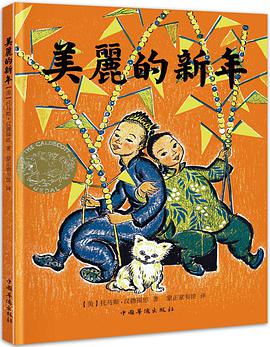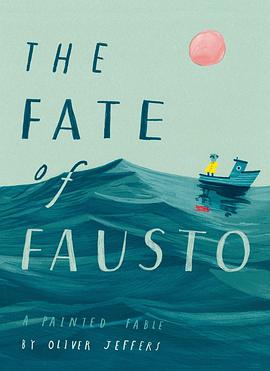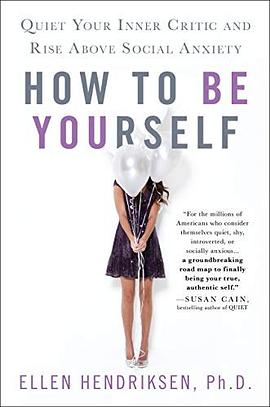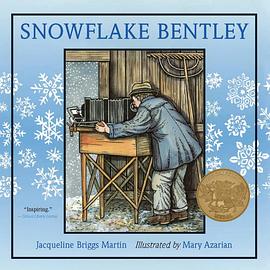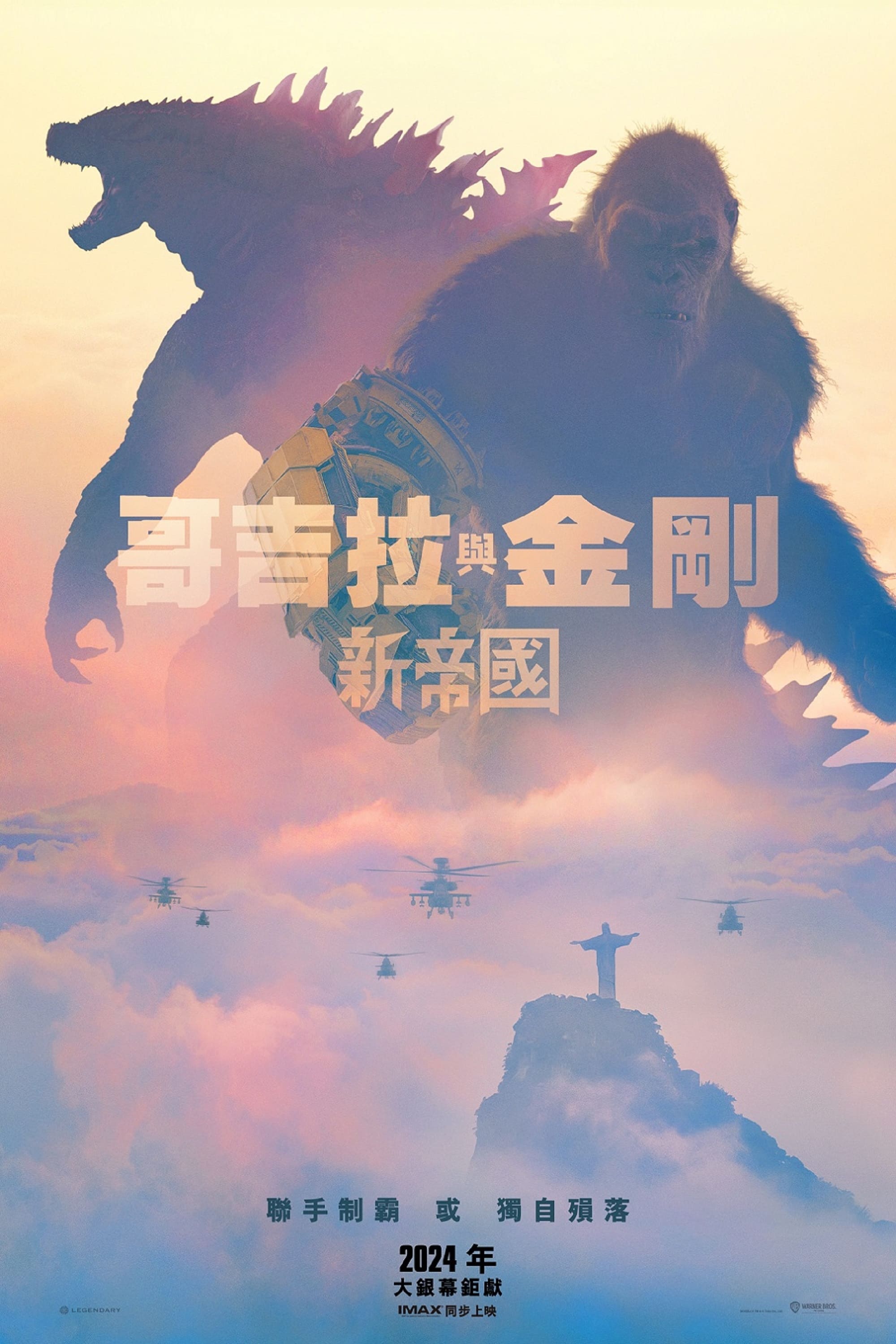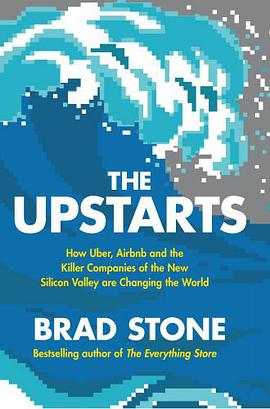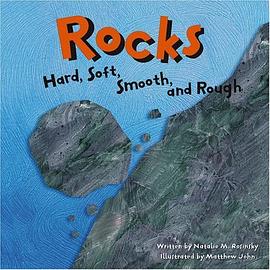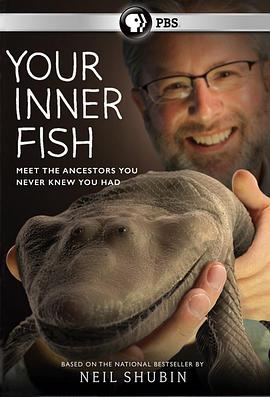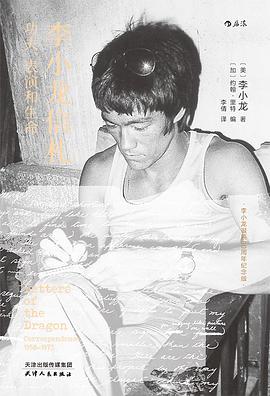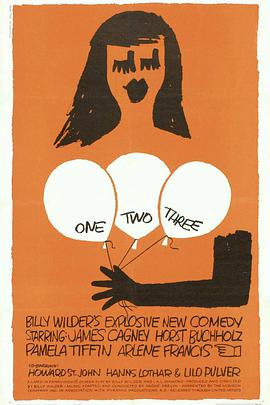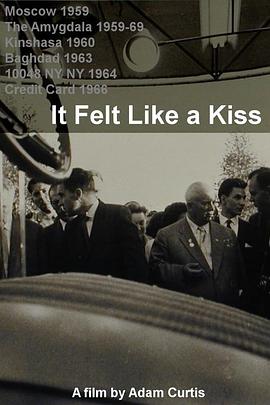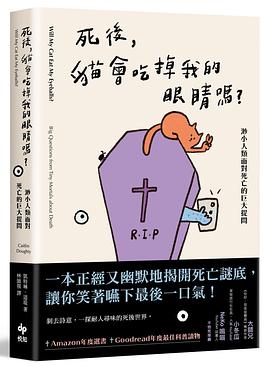美国
The Cult of We 豆瓣
作者:
Eliot Brown
/
Maureen Farrell
Crown
2021
- 6
The definitive inside story of WeWork, its audacious founder, and what its epic unraveling says about a financial system drunk on the elixir of Silicon Valley innovation—from the Wall Street Journal correspondents (recently featured in the WeWork Hulu documentary) whose scoop-filled reporting hastened the company’s downfall.
WeWork would be worth $10 trillion, more than any other company in the world. It wasn’t just an office space provider. It was a tech company—an AI startup, even. Its WeGrow schools and WeLive residences would revolutionize education and housing. One day, mused founder Adam Neumann, a Middle East peace accord would be signed in a WeWork. The company might help colonize Mars. And Neumann would become the world’s first trillionaire.
This was the vision of Neumann and his primary cheerleader, SoftBank’s Masayoshi Son. In hindsight, their ambition for the company, whose primary business was subletting desks in slickly designed offices, seems like madness. Why did so many intelligent people—from venture capitalists to Wall Street elite—fall for the hype? And how did WeWork go so wrong?
In little more than a decade, Neumann transformed himself from a struggling baby clothes salesman into the charismatic, hard-partying CEO of a company worth $47 billion—on paper. With his long hair and feel-good mantras, the six-foot-five Israeli transplant looked the part of a messianic truth teller. Investors swooned, and billions poured in.
Neumann dined with the CEOs of JPMorgan and Goldman Sachs, entertaining a parade of power brokers desperate to get a slice of what he was selling: the country’s most valuable startup, a once-in-a-lifetime opportunity and a generation-defining moment.
Soon, however, WeWork was burning through cash faster than Neumann could bring it in. From his private jet, sometimes clouded with marijuana smoke, he scoured the globe for more capital. Then, as WeWork readied a Hail Mary IPO, it all fell apart. Nearly $40 billion of value vaporized in one of corporate America’s most spectacular meltdowns.
Peppered with eye-popping, never-before-reported details, The Cult of We is the gripping story of careless and often absurd people—and the financial system they have made.
WeWork would be worth $10 trillion, more than any other company in the world. It wasn’t just an office space provider. It was a tech company—an AI startup, even. Its WeGrow schools and WeLive residences would revolutionize education and housing. One day, mused founder Adam Neumann, a Middle East peace accord would be signed in a WeWork. The company might help colonize Mars. And Neumann would become the world’s first trillionaire.
This was the vision of Neumann and his primary cheerleader, SoftBank’s Masayoshi Son. In hindsight, their ambition for the company, whose primary business was subletting desks in slickly designed offices, seems like madness. Why did so many intelligent people—from venture capitalists to Wall Street elite—fall for the hype? And how did WeWork go so wrong?
In little more than a decade, Neumann transformed himself from a struggling baby clothes salesman into the charismatic, hard-partying CEO of a company worth $47 billion—on paper. With his long hair and feel-good mantras, the six-foot-five Israeli transplant looked the part of a messianic truth teller. Investors swooned, and billions poured in.
Neumann dined with the CEOs of JPMorgan and Goldman Sachs, entertaining a parade of power brokers desperate to get a slice of what he was selling: the country’s most valuable startup, a once-in-a-lifetime opportunity and a generation-defining moment.
Soon, however, WeWork was burning through cash faster than Neumann could bring it in. From his private jet, sometimes clouded with marijuana smoke, he scoured the globe for more capital. Then, as WeWork readied a Hail Mary IPO, it all fell apart. Nearly $40 billion of value vaporized in one of corporate America’s most spectacular meltdowns.
Peppered with eye-popping, never-before-reported details, The Cult of We is the gripping story of careless and often absurd people—and the financial system they have made.
The Fate of Fausto 豆瓣
作者:
Oliver Jeffers
Harper Collins Children's Books
2019
- 9
My Stroke of Insight 豆瓣
作者:
Jill Bolte Taylor
Viking Adult
2008
- 5
在线阅读本书
A brain scientist's journey from a debilitating stroke to full recovery becomes an inspiring exploration of human consciousness and its possibilities
On the morning of December 10, 1996, Jill Bolte Taylor, a thirty-seven-year-old Harvard-trained brain scientist, experienced a massive stroke when a blood vessel exploded in the left side of her brain. A neuroanatomist by profession, she observed her own mind completely deteriorate to the point that she could not walk, talk, read, write, or recall any of her life, all within the space of four brief hours. As the damaged left side of her brain--the rational, grounded, detail- and time-oriented side--swung in and out of function, Taylor alternated between two distinct and opposite realties: the euphoric nirvana of the intuitive and kinesthetic right brain, in which she felt a sense of complete well-being and peace; and the logical, sequential left brain, which recognized Jill was having a stroke, and enabled her to seek help before she was lost completely.
In My Stroke of Insight , Taylor shares her unique perspective on the brain and its capacity for recovery, and the sense of omniscient understanding she gained from this unusual and inspiring voyage out of the abyss of a wounded brain. It would take eight years for Taylor to heal completely. Because of her knowledge of how the brain works, her respect for the cells composing her human form, and most of all an amazing mother, Taylor completely repaired her mind and recalibrated her understanding of the world according to the insights gained from her right brain that morning of December 10th.
Today Taylor is convinced that the stroke was the best thing that could have happened to her. It has taught her that the feeling of nirvana is never more than a mere thought away. By stepping to the right of our left brains , we can all uncover the feelings of well-being and peace that are so often sidelined by our own brain chatter. A fascinating journey into the mechanics of the human mind, My Stroke of Insight is both a valuable recovery guide for anyone touched by a brain injury, and an emotionally stirring testimony that deep internal peace truly is accessible to anyone, at any time. Questions for Jill Bolte Taylor Amazon.com: Your first reaction when you realized what was happening to your body was one you would expect: "Oh my gosh, I'm having a stroke!" Your second, though, was a little more surprising: "Wow, this is so cool!" What could be cool about a stroke? Taylor: I grew up to study the brain because I have a brother who is only 18 months older than I am. He was very different in the way he perceived experiences and then chose to behave. As a result, I became fascinated with the human brain and how it creates our perception of reality. He was eventually diagnosed with the brain disorder schizophrenia, and I dedicated my career to the postmortem investigation of the human brain in an attempt to understand, at a biological level, what are the differences between my brain and my brothers brain. On the morning of the stroke, I realized that my brain was no longer functioning like a "normal" brain and this insight into my brother's reality excited me. I was fascinated to intimately understand what it might be like on the inside for someone who would not be diagnosed as normal. Through the eyes of a curious scientist, this was an absolutely rare and fascinating experience for me to witness the breakdown of my own mind. Amazon.com: What did you learn about the brain from your stroke and your recovery that your scientific training hadn't prepared you for? Taylor: My scientific training did not teach me anything about the human spirit and the value of compassion. I had been trained as a scientist, not as a clinician. I can only hope that we are teaching our future physicians about compassion in medicine, and I know that some medical schools, including the Indiana University School of Medicine, have created a curriculum with this intention. My training as a scientist, however, did provide me with a roadmap to how the body and brain work. And although I lost my left cognitive mind that thinks in language, I retained my right hemisphere that thinks in pictures. As a result, although I could not communicate with the external world, I had an intuitive understanding about what I needed to do in order to create an environment in which the cells in my brain could be happy and healthy enough that they could regain their function. In addition, because of my training, I had an innate trust in the ability of my brain to be able to recover itself and my mother and I respected the organ by listening to it. For example, when I was tired, I allowed my brain to sleep, and when I was fresh and capable of focusing my attention, we gave me age-appropriate toys and tools with which to work. Amazon.com: Your stroke affected functions in your left brain, leaving you to what you call the "la-la land" of your right hemisphere. What was it like to live in your right brain, and then to rebuild your left? Taylor: When the cells in my left brain became nonfunctional because they were swimming in a pool of blood, they lost their ability to inhibit the cells in my right hemisphere. In my right brain, I shifted into the consciousness of the present moment. I was in the right here, right now awareness, with no memories of my past and no perception of the future. The beauty of La-la land (my right hemisphere experience of the present moment) was that everything was an explosion of magnificent stimulation and I dwelled in a space of euphoria. This is great way to exist if you don't have to communicate with the external world or care whether or not you have the capacity to learn. I found that in order for me to be able to learn anything, however, I had to take information from the last moment and apply it to the present moment. When my left hemisphere was completely nonfunctional early on, it was impossible for me to learn, which was okay with me, but I am sure it was frustrating for those around me. A simple example of this was trying to put on my shoes and socks. I eventually became physically capable of putting my shoes and socks on, but I had no ability to understand why I would have to put my socks on before my shoes. To me they were simply independent actions that were not related and I did not have the cognitive ability to figure out the appropriate sequencing of the events. Over time, I regained the ability to weave moments back together to create an expanse of time, and with this ability came the ability to learn methodically again. Life in La-la land will always be just a thought away, but I am truly grateful for the ability to think with linearity once again. Amazon.com: What can we learn about our brains and ourselves from your experience, even if we haven't lived through the kind of brain trauma you have? Taylor: I learned that I have much more say about what goes on between my ears than I was ever taught and I believe that this is true for all of us. I used to understand that I had the ability to stop thinking about one thing by consciously choosing to preoccupy my mind with thinking about something else. But I had no idea that it only took 90 seconds for me to have an emotional circuit triggered, flush a physiological response through my body and then flush completely out of me. We can all learn that we can take full responsibility for what thoughts we are thinking and what emotional circuitry we are feeling. Knowing this and acting on this can lead us into feeling a wonderful sense of well-being and peacefulness. Amazon.com: You are the "Singin' Scientist" for Harvard's Brain Bank (just as you were before your stroke). Could you tell us about the Brain Bank (in song or not)? Taylor: There is a long-term shortage of brain tissue donated for research into the severe mental illnesses. Most people dont realize that when you sign the back of your license as an organ donor, the brain is not included. If you would like to donate your brain for research, you must contact a brain bank directly. There is also a shortage of "normal control" tissue for research. The bottom line reality is that if there were more tissue available for research, then more scientists would be dedicating their careers to the study of the severe mental illnesses and we would have more answers about what is going on with these disorders. The numbers of mentally ill individuals in our society are staggering. The most serious and disabling conditions affect about 6 percent--or one in 17--adults and 9-13 percent of children in the United States. Half of all lifetime conditions of mental illness start by age 14 years, and three-fourths by age 24 years. For more information about brain donation to the Harvard brain bank, please call 1-800-BRAINBANK or visit them at: www.brainbank.mclean.org If you would like to hear me sing the brain bank jingle, please visit www.drjilltaylor.com!
A brain scientist's journey from a debilitating stroke to full recovery becomes an inspiring exploration of human consciousness and its possibilities
On the morning of December 10, 1996, Jill Bolte Taylor, a thirty-seven-year-old Harvard-trained brain scientist, experienced a massive stroke when a blood vessel exploded in the left side of her brain. A neuroanatomist by profession, she observed her own mind completely deteriorate to the point that she could not walk, talk, read, write, or recall any of her life, all within the space of four brief hours. As the damaged left side of her brain--the rational, grounded, detail- and time-oriented side--swung in and out of function, Taylor alternated between two distinct and opposite realties: the euphoric nirvana of the intuitive and kinesthetic right brain, in which she felt a sense of complete well-being and peace; and the logical, sequential left brain, which recognized Jill was having a stroke, and enabled her to seek help before she was lost completely.
In My Stroke of Insight , Taylor shares her unique perspective on the brain and its capacity for recovery, and the sense of omniscient understanding she gained from this unusual and inspiring voyage out of the abyss of a wounded brain. It would take eight years for Taylor to heal completely. Because of her knowledge of how the brain works, her respect for the cells composing her human form, and most of all an amazing mother, Taylor completely repaired her mind and recalibrated her understanding of the world according to the insights gained from her right brain that morning of December 10th.
Today Taylor is convinced that the stroke was the best thing that could have happened to her. It has taught her that the feeling of nirvana is never more than a mere thought away. By stepping to the right of our left brains , we can all uncover the feelings of well-being and peace that are so often sidelined by our own brain chatter. A fascinating journey into the mechanics of the human mind, My Stroke of Insight is both a valuable recovery guide for anyone touched by a brain injury, and an emotionally stirring testimony that deep internal peace truly is accessible to anyone, at any time. Questions for Jill Bolte Taylor Amazon.com: Your first reaction when you realized what was happening to your body was one you would expect: "Oh my gosh, I'm having a stroke!" Your second, though, was a little more surprising: "Wow, this is so cool!" What could be cool about a stroke? Taylor: I grew up to study the brain because I have a brother who is only 18 months older than I am. He was very different in the way he perceived experiences and then chose to behave. As a result, I became fascinated with the human brain and how it creates our perception of reality. He was eventually diagnosed with the brain disorder schizophrenia, and I dedicated my career to the postmortem investigation of the human brain in an attempt to understand, at a biological level, what are the differences between my brain and my brothers brain. On the morning of the stroke, I realized that my brain was no longer functioning like a "normal" brain and this insight into my brother's reality excited me. I was fascinated to intimately understand what it might be like on the inside for someone who would not be diagnosed as normal. Through the eyes of a curious scientist, this was an absolutely rare and fascinating experience for me to witness the breakdown of my own mind. Amazon.com: What did you learn about the brain from your stroke and your recovery that your scientific training hadn't prepared you for? Taylor: My scientific training did not teach me anything about the human spirit and the value of compassion. I had been trained as a scientist, not as a clinician. I can only hope that we are teaching our future physicians about compassion in medicine, and I know that some medical schools, including the Indiana University School of Medicine, have created a curriculum with this intention. My training as a scientist, however, did provide me with a roadmap to how the body and brain work. And although I lost my left cognitive mind that thinks in language, I retained my right hemisphere that thinks in pictures. As a result, although I could not communicate with the external world, I had an intuitive understanding about what I needed to do in order to create an environment in which the cells in my brain could be happy and healthy enough that they could regain their function. In addition, because of my training, I had an innate trust in the ability of my brain to be able to recover itself and my mother and I respected the organ by listening to it. For example, when I was tired, I allowed my brain to sleep, and when I was fresh and capable of focusing my attention, we gave me age-appropriate toys and tools with which to work. Amazon.com: Your stroke affected functions in your left brain, leaving you to what you call the "la-la land" of your right hemisphere. What was it like to live in your right brain, and then to rebuild your left? Taylor: When the cells in my left brain became nonfunctional because they were swimming in a pool of blood, they lost their ability to inhibit the cells in my right hemisphere. In my right brain, I shifted into the consciousness of the present moment. I was in the right here, right now awareness, with no memories of my past and no perception of the future. The beauty of La-la land (my right hemisphere experience of the present moment) was that everything was an explosion of magnificent stimulation and I dwelled in a space of euphoria. This is great way to exist if you don't have to communicate with the external world or care whether or not you have the capacity to learn. I found that in order for me to be able to learn anything, however, I had to take information from the last moment and apply it to the present moment. When my left hemisphere was completely nonfunctional early on, it was impossible for me to learn, which was okay with me, but I am sure it was frustrating for those around me. A simple example of this was trying to put on my shoes and socks. I eventually became physically capable of putting my shoes and socks on, but I had no ability to understand why I would have to put my socks on before my shoes. To me they were simply independent actions that were not related and I did not have the cognitive ability to figure out the appropriate sequencing of the events. Over time, I regained the ability to weave moments back together to create an expanse of time, and with this ability came the ability to learn methodically again. Life in La-la land will always be just a thought away, but I am truly grateful for the ability to think with linearity once again. Amazon.com: What can we learn about our brains and ourselves from your experience, even if we haven't lived through the kind of brain trauma you have? Taylor: I learned that I have much more say about what goes on between my ears than I was ever taught and I believe that this is true for all of us. I used to understand that I had the ability to stop thinking about one thing by consciously choosing to preoccupy my mind with thinking about something else. But I had no idea that it only took 90 seconds for me to have an emotional circuit triggered, flush a physiological response through my body and then flush completely out of me. We can all learn that we can take full responsibility for what thoughts we are thinking and what emotional circuitry we are feeling. Knowing this and acting on this can lead us into feeling a wonderful sense of well-being and peacefulness. Amazon.com: You are the "Singin' Scientist" for Harvard's Brain Bank (just as you were before your stroke). Could you tell us about the Brain Bank (in song or not)? Taylor: There is a long-term shortage of brain tissue donated for research into the severe mental illnesses. Most people dont realize that when you sign the back of your license as an organ donor, the brain is not included. If you would like to donate your brain for research, you must contact a brain bank directly. There is also a shortage of "normal control" tissue for research. The bottom line reality is that if there were more tissue available for research, then more scientists would be dedicating their careers to the study of the severe mental illnesses and we would have more answers about what is going on with these disorders. The numbers of mentally ill individuals in our society are staggering. The most serious and disabling conditions affect about 6 percent--or one in 17--adults and 9-13 percent of children in the United States. Half of all lifetime conditions of mental illness start by age 14 years, and three-fourths by age 24 years. For more information about brain donation to the Harvard brain bank, please call 1-800-BRAINBANK or visit them at: www.brainbank.mclean.org If you would like to hear me sing the brain bank jingle, please visit www.drjilltaylor.com!
Snowflake Bentley 豆瓣
作者:
Jacqueline Briggs Martin
Houghton Mifflin Books for Children
1998
- 9
在线阅读本书
From the time he was a small boy, Wilson Bentley saw snowflakes as small miracles. And he determined that one day his camera would capture for others the wonder of the tiny crystal. Bentley's enthusiasm for photographing snowflakes was often misunderstood in his time, but his patience and determination revealed two important truths: no two snowflakes are alike; and each one is startlingly beautiful. His story is gracefully told and brought to life in lovely woodcuts, giving children insight into a soul who had not only a scientist's vision and perseverance but a clear passion for the wonders of nature. "Of all the forms of water the tiny six-pointed crystals of ice called snow are incomparably the most beautiful and varied." -- Wilson Bentley. SNOWFLAKE BENTLEY won the 1999 Caldecott Medal.
From the time he was a small boy, Wilson Bentley saw snowflakes as small miracles. And he determined that one day his camera would capture for others the wonder of the tiny crystal. Bentley's enthusiasm for photographing snowflakes was often misunderstood in his time, but his patience and determination revealed two important truths: no two snowflakes are alike; and each one is startlingly beautiful. His story is gracefully told and brought to life in lovely woodcuts, giving children insight into a soul who had not only a scientist's vision and perseverance but a clear passion for the wonders of nature. "Of all the forms of water the tiny six-pointed crystals of ice called snow are incomparably the most beautiful and varied." -- Wilson Bentley. SNOWFLAKE BENTLEY won the 1999 Caldecott Medal.
索尼娅的小鸡 豆瓣
Sonya's Chickens
作者:
[美] 菲比·瓦尔
译者:
冷贝凡
后浪丨花山文艺出版社
2017
- 11
“美国网评2015十七本最美图画书”之一
《赫芬顿邮报》2015年度最佳图画书
《科克斯书评》2015年度最佳图画书
《学校图书馆杂志》2015年度最佳童书
........................................................ ...................................................
※编辑推荐※
☆展现独特的多元家庭生活的温暖,田园牧场的自然风光之美。
《索尼娅的小鸡》展现的是独特的美西田园自然生活。索尼娅爱着她的小鸡,索尼娅的爸爸爱着索尼娅,狐狸爸爸爱着他的小狐狸。万物有灵且美,在这里,人与动物、植物和谐而有序地生长。
索尼娅的家庭是多种族的,画中也展现了他们简单、温暖、丰富而又充满爱意的日常家庭生活。
☆讲述失落与守护的亲情故事,鼓励孩子面对失落,勇敢承担。
在成长过程中,我们很少与孩子谈论失去、死亡和悲伤的话题。这本书通过索尼娅从失去小鸡,接受父亲的安慰,继续细心照料小鸡,直到得到新的鸡蛋的过程,鼓励孩子勇敢地向大人说出自己真实的感受,分享失落和悲伤的情绪,并且对自己所爱的事物,承担起守护的责任。
☆美国新兴人气插画家菲比·瓦尔作品,获奖无数,广受赞誉。
菲比·瓦尔以其独具个人风格的创作题材与绘画风格,无论是插画还是设计产品,都在美国大受欢迎。出生在美国西部地区的她将自由快乐的童年生活融入绘本创作。她擅长运用水彩、拼贴、彩铅等多种技法,营造温馨可爱、稚朴美好的画面。
《索尼娅的小鸡》是她的第一本绘本,为她赢得多项童书大奖。她同时还是关注种族歧视、女性平权等等领域的公益画家。
...........................................................................................................
※内容简介※
索尼娅走到哪儿,她的小鸡们就跟着她走到哪儿,“叽叽叽”地大声叫着。在索尼娅的精心照顾下,小鸡们很快就长成了健康的母鸡,还给索尼娅带来了一份美好的礼物:一只鸡蛋!一天夜里,索尼娅听到了从鸡舍里传来的响动,紧接着她发现其中一只母鸡不见了。
它去了哪里?发生了什么事?当索尼娅找到答案时,她明白了自然万物的关联,也体会到了照顾一个生命的快乐和悲伤。
...........................................................................................................
※名人推荐※
这个简单的故事有一种老式、复古的感觉。它创造性地运用了水彩、拼贴、彩色铅笔种种技法……这是一个关于自然,关于死亡,却令人感到欣慰的故事。画面与文字同样精美。
——科克斯书评
...........................................................................................................
※读者推荐※
我爱这本书。我们很少花费时间去和孩子谈论失落、死亡、悲伤等等这些让人感到不舒服的话题。然而儿童,尤其是幼儿,他们都会经历失落和恐惧。我和一些三四岁的孩子对这本书进行了交流,有的孩子拥有足够的能力,去表达自己的恐惧和失落。我从他们身上学到了很多。现在我努力,尝试让所有的孩子,都可以学会与其他孩子分享自己的失落与悲伤。
——美国亚马逊读者评论
这本书非常温柔,丰富,美丽,体贴。(当然,因为它的作者是菲比·瓦尔!)我们被介绍给一个可爱的多元文化家庭,他们过着简单而有爱心的生活。父亲是故事中的保护者。索尼娅的家庭是双重种族的,很少有这个家庭配置的书。
——美国亚马逊读者评论
在这本书中,索尼娅的小鸡经历的一切都那么真实。我想这会让我三岁的孩子更懂得死亡,也懂得鸡块都是由鸡做成的。
——美国亚马逊读者评论
《赫芬顿邮报》2015年度最佳图画书
《科克斯书评》2015年度最佳图画书
《学校图书馆杂志》2015年度最佳童书
........................................................ ...................................................
※编辑推荐※
☆展现独特的多元家庭生活的温暖,田园牧场的自然风光之美。
《索尼娅的小鸡》展现的是独特的美西田园自然生活。索尼娅爱着她的小鸡,索尼娅的爸爸爱着索尼娅,狐狸爸爸爱着他的小狐狸。万物有灵且美,在这里,人与动物、植物和谐而有序地生长。
索尼娅的家庭是多种族的,画中也展现了他们简单、温暖、丰富而又充满爱意的日常家庭生活。
☆讲述失落与守护的亲情故事,鼓励孩子面对失落,勇敢承担。
在成长过程中,我们很少与孩子谈论失去、死亡和悲伤的话题。这本书通过索尼娅从失去小鸡,接受父亲的安慰,继续细心照料小鸡,直到得到新的鸡蛋的过程,鼓励孩子勇敢地向大人说出自己真实的感受,分享失落和悲伤的情绪,并且对自己所爱的事物,承担起守护的责任。
☆美国新兴人气插画家菲比·瓦尔作品,获奖无数,广受赞誉。
菲比·瓦尔以其独具个人风格的创作题材与绘画风格,无论是插画还是设计产品,都在美国大受欢迎。出生在美国西部地区的她将自由快乐的童年生活融入绘本创作。她擅长运用水彩、拼贴、彩铅等多种技法,营造温馨可爱、稚朴美好的画面。
《索尼娅的小鸡》是她的第一本绘本,为她赢得多项童书大奖。她同时还是关注种族歧视、女性平权等等领域的公益画家。
...........................................................................................................
※内容简介※
索尼娅走到哪儿,她的小鸡们就跟着她走到哪儿,“叽叽叽”地大声叫着。在索尼娅的精心照顾下,小鸡们很快就长成了健康的母鸡,还给索尼娅带来了一份美好的礼物:一只鸡蛋!一天夜里,索尼娅听到了从鸡舍里传来的响动,紧接着她发现其中一只母鸡不见了。
它去了哪里?发生了什么事?当索尼娅找到答案时,她明白了自然万物的关联,也体会到了照顾一个生命的快乐和悲伤。
...........................................................................................................
※名人推荐※
这个简单的故事有一种老式、复古的感觉。它创造性地运用了水彩、拼贴、彩色铅笔种种技法……这是一个关于自然,关于死亡,却令人感到欣慰的故事。画面与文字同样精美。
——科克斯书评
...........................................................................................................
※读者推荐※
我爱这本书。我们很少花费时间去和孩子谈论失落、死亡、悲伤等等这些让人感到不舒服的话题。然而儿童,尤其是幼儿,他们都会经历失落和恐惧。我和一些三四岁的孩子对这本书进行了交流,有的孩子拥有足够的能力,去表达自己的恐惧和失落。我从他们身上学到了很多。现在我努力,尝试让所有的孩子,都可以学会与其他孩子分享自己的失落与悲伤。
——美国亚马逊读者评论
这本书非常温柔,丰富,美丽,体贴。(当然,因为它的作者是菲比·瓦尔!)我们被介绍给一个可爱的多元文化家庭,他们过着简单而有爱心的生活。父亲是故事中的保护者。索尼娅的家庭是双重种族的,很少有这个家庭配置的书。
——美国亚马逊读者评论
在这本书中,索尼娅的小鸡经历的一切都那么真实。我想这会让我三岁的孩子更懂得死亡,也懂得鸡块都是由鸡做成的。
——美国亚马逊读者评论
地球停转之日 (2008) TMDB 豆瓣 Min reol IMDb 维基数据
The Day the Earth Stood Still
5.3 (153 个评分)
导演:
斯科特·德瑞克森
演员:
基努·里维斯
/
詹妮弗·康纳利
…
其它标题:
지구가 멈추는 날
/
地球が静止する日
…
一个从银河系某个星球出发的飞碟向地球无限靠近,最后选择在美国纽约着陆。面对这样一个看似不友好的天外来客,美国警方给出了强烈的回应和攻击。其实来自外星球的智慧生命克拉图踏上地球并非有入侵的妄念,而是带着警示来告知人类--如果再有“挑衅”之举,践踏和平,地球将惨遭灭亡。随他一同到地球“造访”的还有一个具有超级强悍的机器人戈特,他具有的超级能量能将人类轻易“放倒”。
着陆后,这两个天外来客被警方带到了一个地方进行盘问,警方不友好的行为使得克拉图最终自己从这里逃走。通过与人类的交流和沟通,克拉图开始学习关于地球和人类的诸多知识,也让他对这个人类栖居之地有了了解。一个偶然的机会,克拉图遇到了海伦·班森和她的儿子波比,并在这母子俩的带领下开始了他的纽约之旅。克拉图最终在在林肯纪念堂前驻足,因为他看到了林肯在很久以前发表的文字,而他知道这将是拯救地球的希望。
当母子俩开始对克拉图产生怀疑时,克拉图直言不讳地告诉了自己和戈特此行的目的。原来戈特是银河系超级机器人执法小组的成员,他们以捍卫宇宙和平为己任。他们认为人类对宇宙的和平危机越来越深重,因此有必要对地球进行摧毁。
较量开始了,克拉图在林肯纪念堂前看到的那一段文字“Klaatu barada nikto”果真是解救人类的密码吗?这场地球毁灭战会打响吗?地球真的会惨遭灭绝?谁将会是最后的救世主?
着陆后,这两个天外来客被警方带到了一个地方进行盘问,警方不友好的行为使得克拉图最终自己从这里逃走。通过与人类的交流和沟通,克拉图开始学习关于地球和人类的诸多知识,也让他对这个人类栖居之地有了了解。一个偶然的机会,克拉图遇到了海伦·班森和她的儿子波比,并在这母子俩的带领下开始了他的纽约之旅。克拉图最终在在林肯纪念堂前驻足,因为他看到了林肯在很久以前发表的文字,而他知道这将是拯救地球的希望。
当母子俩开始对克拉图产生怀疑时,克拉图直言不讳地告诉了自己和戈特此行的目的。原来戈特是银河系超级机器人执法小组的成员,他们以捍卫宇宙和平为己任。他们认为人类对宇宙的和平危机越来越深重,因此有必要对地球进行摧毁。
较量开始了,克拉图在林肯纪念堂前看到的那一段文字“Klaatu barada nikto”果真是解救人类的密码吗?这场地球毁灭战会打响吗?地球真的会惨遭灭绝?谁将会是最后的救世主?
哥斯拉大战金刚2:帝国崛起 (2024) 维基数据 豆瓣 TMDB IMDb
Godzilla x Kong: The New Empire
6.0 (186 个评分)
导演:
Adam Wingard
演员:
Rebecca Hall
/
Kaylee Hottle
…
其它标题:
Godzilla x Kong: The New Empire
/
哥斯拉×金剛:新帝國
…
继上一次的怪兽高燃对战之后,金刚和哥斯拉将再度联手对抗一个潜伏在世界中的巨大威胁,并逐步探索这些巨兽们的起源以及骷髅岛等地的奥秘。同时,上古之战的面纱也将会被揭晓,而正是那场战斗创造出了这些超凡的生物,并深刻影响了人类世界的命运。
The Upstarts 豆瓣
作者:
Brad Stone
Bantam Press
2017
- 2
A look deep inside the new Silicon Valley, from the New York Times bestselling author of The Everything Store
Ten years ago, the idea of getting into a stranger's car, or a walking into a stranger's home, would have seemed bizarre and dangerous, but today it's as common as ordering a book online. Uber and Airbnb have ushered in a new era: redefining neighborhoods, challenging the way governments regulate business, and changing the way we travel.
In the spirit of iconic Silicon Valley renegades like Steve Jobs and Bill Gates, another generation of entrepreneurs is using technology to upend convention and disrupt entire industries. These are the upstarts, idiosyncratic founders with limitless drive and an abundance of self-confidence. Led by such visionaries as Travis Kalanick of Uber and Brian Chesky of Airbnb, they are rewriting the rules of business and often sidestepping serious ethical and legal obstacles in the process.
The Upstarts is the definitive story of two new titans of business and a dawning age of tenacity, conflict and wealth. In Brad Stone's riveting account of the most radical companies of the new Silicon Valley, we discover how it all happened and what it took to change the world.
Ten years ago, the idea of getting into a stranger's car, or a walking into a stranger's home, would have seemed bizarre and dangerous, but today it's as common as ordering a book online. Uber and Airbnb have ushered in a new era: redefining neighborhoods, challenging the way governments regulate business, and changing the way we travel.
In the spirit of iconic Silicon Valley renegades like Steve Jobs and Bill Gates, another generation of entrepreneurs is using technology to upend convention and disrupt entire industries. These are the upstarts, idiosyncratic founders with limitless drive and an abundance of self-confidence. Led by such visionaries as Travis Kalanick of Uber and Brian Chesky of Airbnb, they are rewriting the rules of business and often sidestepping serious ethical and legal obstacles in the process.
The Upstarts is the definitive story of two new titans of business and a dawning age of tenacity, conflict and wealth. In Brad Stone's riveting account of the most radical companies of the new Silicon Valley, we discover how it all happened and what it took to change the world.
Rocks 豆瓣
作者:
Rosinsky, Natalie M./ John, Matthew (ILT)
Picture Window Books
Engage young readers in real science with these informative, fun, fact-filled books. This series is aligned with the standards, "The Earth" and "Forces of Nature" as required by Benchmarks for Science Literacy: Project 2061.
你体内的鱼 (2014) 豆瓣
Your Inner Fish
8.9 (7 个评分)
导演:
David Dugan
/
Alex Tate
…
演员:
Neil Shubin
Have you ever wondered why the human body looks the way it does? Why our hands have five fingers instead of six? Why we walk on two legs instead of four?
It took more than 350 million years for the human body to take shape. How did it become the complicated, quirky, amazing machine it is today?
Your Inner Fish delves deep into the past to answer these questions. Premiering Wednesday, April 9, 2014, the three-part series reveals a startling truth: Hidden within the human body is a story of life on Earth.
(Read more on
)
It took more than 350 million years for the human body to take shape. How did it become the complicated, quirky, amazing machine it is today?
Your Inner Fish delves deep into the past to answer these questions. Premiering Wednesday, April 9, 2014, the three-part series reveals a startling truth: Hidden within the human body is a story of life on Earth.
(Read more on
)
Boundaries 豆瓣
作者:
Maya Lin
Simon & Schuster
2000
- 10
Walking through this park-like area, the memorial appears as a rift in the earth -- a long, polished black stone wall, emerging from and receding into the earth. Approaching the memorial, the ground slopes gently downward, and the low walls emerging on either side, growing out of the earth, extend and converge at a point below and ahead. Walking into the grassy site contained by the walls of this memorial, we can barely make out the carved names upon the memorial's walls. These names, seemingly infinite in number, convey the sense of overwhelming numbers, while unifying these individuals into a whole...
So begins the competition entry submitted in 1981 by a Yale undergraduate for the design of the Vietnam Veterans Memorial in Washington, D.C. -- subsequently called "as moving and awesome and popular a piece of memorial architecture as exists anywhere in the world." Its creator, Maya Lin, has been nothing less than world famous ever since. From the explicitly political to the unashamedly literary to the completely abstract, her simple and powerful sculpture -- the Rockefeller Foundation sculpture, the Southern Poverty Law Center Civil Rights Memorial, the Yale Women's Table, Wave Field -- her architechture, including The Museum for African Art and the Norton residence, and her protean design talents have defined her as one of the most gifted creative geniuses of the age.
Boundaries is her first book; an eloquent visual/verbal sketchbook produced with the same inspiration and attention to detail as any of her other artworks. Like her environmental sculptures, it is a site, but one which exists at a remove so that it may comment on the personal and artistic elements that make up those works. In it, sketches, photographs, workbook entries, and original design are held together by a deeply personal text. Boundaries is a powerful literary and visual statement by "a leading public artist." (Holland Carter). It is itself a unique work of art.
So begins the competition entry submitted in 1981 by a Yale undergraduate for the design of the Vietnam Veterans Memorial in Washington, D.C. -- subsequently called "as moving and awesome and popular a piece of memorial architecture as exists anywhere in the world." Its creator, Maya Lin, has been nothing less than world famous ever since. From the explicitly political to the unashamedly literary to the completely abstract, her simple and powerful sculpture -- the Rockefeller Foundation sculpture, the Southern Poverty Law Center Civil Rights Memorial, the Yale Women's Table, Wave Field -- her architechture, including The Museum for African Art and the Norton residence, and her protean design talents have defined her as one of the most gifted creative geniuses of the age.
Boundaries is her first book; an eloquent visual/verbal sketchbook produced with the same inspiration and attention to detail as any of her other artworks. Like her environmental sculptures, it is a site, but one which exists at a remove so that it may comment on the personal and artistic elements that make up those works. In it, sketches, photographs, workbook entries, and original design are held together by a deeply personal text. Boundaries is a powerful literary and visual statement by "a leading public artist." (Holland Carter). It is itself a unique work of art.
李小龙信札 豆瓣
Letters of the Dragon: Correspondence, 1958-1973
作者:
李小龙
译者:
李倩
后浪 | 天津人民出版社
2020
- 6
李小龙诞辰80周年纪念版
15年鼎盛时光,138封珍藏信札,让李小龙亲笔告诉你……
东方、西方的碰撞与结合 │ 传统、现代的冲突与创新
离不开爱情、亲情和友情 │ 放不下功夫、表演和生命
◎ 编辑推荐 ◎
★ 用“截拳道”的方式认识李小龙
呈现在本书中的138封信札,在 今天看来,乃是李小龙写给你我每一位正在翻阅它们的读者。因为,读他的亲笔书信,是认识他的最精简直接的方式,恰如他的截拳道所揭示的真理一般。
☆ 生平重要信件悉数收入
在李小龙人生的几次重要节点,他都选择借书信向朋友袒露真心真意。其中,1962年9月致曹敏儿、1969年1月4日致张卓庆、1972年8月12日致水户上原、1972年11月致麒麟,这四封信堪称李小龙的微型自传,读来让人深思和激赏。
◆ 历史价值与文化价值并存
这些信札中,一是保存了李小龙创立截拳道的思考过程,二是有诸多好莱坞与港片的幕后故事;三是呈现了二十世纪六七十年代海外华人、美国亚裔群体的生活场景和奋斗经历;四是使站在东方与西方、传统与现代的十字路口上的李小龙更加形象立体,他的思考与创造对今天的世界仍有借鉴意义。
◇ 李小龙,永远的榜样
一个谦虚、好学、开放的人,一个致力于追求生命真谛的人,当他了解李小龙愈多,自然会愈加肃然起敬。对于李小龙,我们知道的远远不够,而这本书可以帮助你至少不会错过他。
◎ 内容简介 ◎
这本信札集记载了李小龙从赴美国求学到在香港逝世之间的十五年珍贵时光。在这些寄给家人、师长、朋友、弟子、同行和影迷的信札中,李小龙毫无保留地袒露了他真诚的灵魂。通过他的亲笔,我们得以领略一代传奇巨星光环背后那兴味盎然的普通人生活,以及他那充满个性的奋斗历程。
李小龙短暂的生命是一个人努力追求自我解放和自我实现的绝佳典范,功夫、表演和生命就是他的探索工具,也是这些信札的主题。翻阅这些信札,我们仿佛踏上了一趟“龙之旅”,在沿途每一个重要关口,我们都将拨开纷纭迷雾,目睹那些曾被掩盖的鳞爪痕迹,了解这个人怎样活过了一生!
◎ 名人推荐 ◎
阅读小龙的信札,你要从中寻找的最重要的一样东西便是他逐梦的典范……理性地计划——履行——达成。这就是小龙。这就是他实现梦想的方式。 ——琳达·李·卡德韦尔
这些信札集中揭示了李小龙生命中的崇高品质——凡事力争做到最好,绝不退而求其次。他的一生彰显了一种日求精进、陶冶情操、为人正派、重视人际、逆水行舟、精神境界强韧超凡的人生哲学。最后,李小龙的书信还反映出了“爱、和睦与兄弟情”的人生理念,而这也恰是他经常书于信末的衷心祝福。 ——约翰·里特
战士的方式不仅用于战斗,在日常生活中也可以进行实践。无论是生活还是体育,他教会我们做好准备,面对挑战,走向成功。——贾巴尔
他每时每刻都处在压力之下,醉心于使自己变得完美,下决心要达到个人目标。 ——成龙
李小龙刚开始拍电影时,我们中国人在外国绝对没有现在这么让人尊重,所以我是以一个中国人的态度去奉他为偶像的。 ——甄子丹
15年鼎盛时光,138封珍藏信札,让李小龙亲笔告诉你……
东方、西方的碰撞与结合 │ 传统、现代的冲突与创新
离不开爱情、亲情和友情 │ 放不下功夫、表演和生命
◎ 编辑推荐 ◎
★ 用“截拳道”的方式认识李小龙
呈现在本书中的138封信札,在 今天看来,乃是李小龙写给你我每一位正在翻阅它们的读者。因为,读他的亲笔书信,是认识他的最精简直接的方式,恰如他的截拳道所揭示的真理一般。
☆ 生平重要信件悉数收入
在李小龙人生的几次重要节点,他都选择借书信向朋友袒露真心真意。其中,1962年9月致曹敏儿、1969年1月4日致张卓庆、1972年8月12日致水户上原、1972年11月致麒麟,这四封信堪称李小龙的微型自传,读来让人深思和激赏。
◆ 历史价值与文化价值并存
这些信札中,一是保存了李小龙创立截拳道的思考过程,二是有诸多好莱坞与港片的幕后故事;三是呈现了二十世纪六七十年代海外华人、美国亚裔群体的生活场景和奋斗经历;四是使站在东方与西方、传统与现代的十字路口上的李小龙更加形象立体,他的思考与创造对今天的世界仍有借鉴意义。
◇ 李小龙,永远的榜样
一个谦虚、好学、开放的人,一个致力于追求生命真谛的人,当他了解李小龙愈多,自然会愈加肃然起敬。对于李小龙,我们知道的远远不够,而这本书可以帮助你至少不会错过他。
◎ 内容简介 ◎
这本信札集记载了李小龙从赴美国求学到在香港逝世之间的十五年珍贵时光。在这些寄给家人、师长、朋友、弟子、同行和影迷的信札中,李小龙毫无保留地袒露了他真诚的灵魂。通过他的亲笔,我们得以领略一代传奇巨星光环背后那兴味盎然的普通人生活,以及他那充满个性的奋斗历程。
李小龙短暂的生命是一个人努力追求自我解放和自我实现的绝佳典范,功夫、表演和生命就是他的探索工具,也是这些信札的主题。翻阅这些信札,我们仿佛踏上了一趟“龙之旅”,在沿途每一个重要关口,我们都将拨开纷纭迷雾,目睹那些曾被掩盖的鳞爪痕迹,了解这个人怎样活过了一生!
◎ 名人推荐 ◎
阅读小龙的信札,你要从中寻找的最重要的一样东西便是他逐梦的典范……理性地计划——履行——达成。这就是小龙。这就是他实现梦想的方式。 ——琳达·李·卡德韦尔
这些信札集中揭示了李小龙生命中的崇高品质——凡事力争做到最好,绝不退而求其次。他的一生彰显了一种日求精进、陶冶情操、为人正派、重视人际、逆水行舟、精神境界强韧超凡的人生哲学。最后,李小龙的书信还反映出了“爱、和睦与兄弟情”的人生理念,而这也恰是他经常书于信末的衷心祝福。 ——约翰·里特
战士的方式不仅用于战斗,在日常生活中也可以进行实践。无论是生活还是体育,他教会我们做好准备,面对挑战,走向成功。——贾巴尔
他每时每刻都处在压力之下,醉心于使自己变得完美,下决心要达到个人目标。 ——成龙
李小龙刚开始拍电影时,我们中国人在外国绝对没有现在这么让人尊重,所以我是以一个中国人的态度去奉他为偶像的。 ——甄子丹
生於美國 豆瓣
RENEGADES: BORN IN THE USA
作者:
Barack Obama
译者:
洪世民
商業周刊
2023
- 4
美國前總統、諾貝爾和平獎得主歐巴馬
╳
美國藍領搖滾教父、工人皇帝布魯斯•史普林斯汀
從夢想‧神話‧音樂談起,重塑新時代美國夢!
美國,自由的沃土,吸引世界各地的人前來創造歷史,實現各自的美國夢。時光推移,深根這片土地上的人開始豎立高牆、排除異己,拒絕一切不同自己價值觀、種族、政治立場……極化現象到了水火不容的地步。
非關藍色、紅色,非關黑色、白色,而是同屬美國的連結感。如果文化已經分裂,要如何重新營造那種感覺?要如何恢復對美國前途的信心?要如何訴說這個國家嶄新、團結的故事,既忠於我們最高的理想,同時也誠實說明了我們的不足之處?
兩個局外人「一個黑人和一個白人」透過探討美國人避而不談、不願追溯的歷史,希望能夠引發共鳴與更多不同聲音加入,讓這個四分五裂的國家團結一致,回歸全球領導地位的道路。
一切【對話】就在擺著數十把吉他的錄音棚裡展開……
歐巴馬:在2020年夏天第一次坐下來錄《叛徒:生於美國》的時候,並不知道我們的對話會如何發展。我只知道布魯斯是說故事高手,是美國經驗的吟遊詩人──知道我們很多看法雷同,包括我們的國家對一些根本問題發生了令人不安的轉變。我們仍努力理解究竟我們怎麼走到今天這個地步,並思索可以怎麼訴說更有凝聚力的故事來消弭美國理想與現實之間的差距。生命與你交會,但你從未真正聽過他人的故事。我們敢說,只要你敞開心胸,細細聆聽,你會得到鼓舞……
布魯斯:我們從最初開始,成長過程、我們的相似處、不同點。夏威夷、紐澤西……頗不一樣;父親缺席……頗為類似。然後我們讓對話自然發展。我們漫談人生,談人生該怎麼過,談生命所處的世界,談我們做過哪些努力來塑造世界,我透過音樂,巴拉克透過政治,把世界塑造成我們覺得可以成為的樣子。我們也有嚴肅的對話,探討這個國家的命運、人民的前途,探討有哪些破壞、醜惡、墮落的力量想拆毀國家……
故事就這樣開始了。擅常將主流搖滾音樂與美國藍領階級生活的敘事結合,被封為音樂界「工人皇帝」的布魯斯•史普林斯汀,以及美國首位擁有非裔血統的美國總統巴拉克‧歐巴馬──一位透過音樂、一位透過政治──之間坦誠、發人深省和有趣的對話,從夢想、音樂、身分和社區,娓娓道來各自家族的起源與職業生涯決定性時刻,再深入探討美國兩極分化的政治狀態,以及造成美國夢和美國夢之間愈來愈大的鴻溝。
這是一本關於美國一切現實的故事,述說著美國建立以來人民內心一直尋找的「根」,探索社會階層、種族、史上最鼓舞人心的美國英雄等事蹟,試著打碎舊時代美國夢的神話,建立更多元與尊重的新美國夢。
【特別收錄】
從歐巴馬和史普林斯汀親口介紹美國原創歷史
獨家收錄 《叛徒》(Renegades )播客內容以外的新對話
獨家收錄歐巴馬帶註釋的手寫演講稿。
史普林斯汀手寫歌詞與資料。
來自兩位作者的私藏生活照照片。
特別為本書的談話提供豐富歷史照片和文件。
╳
美國藍領搖滾教父、工人皇帝布魯斯•史普林斯汀
從夢想‧神話‧音樂談起,重塑新時代美國夢!
美國,自由的沃土,吸引世界各地的人前來創造歷史,實現各自的美國夢。時光推移,深根這片土地上的人開始豎立高牆、排除異己,拒絕一切不同自己價值觀、種族、政治立場……極化現象到了水火不容的地步。
非關藍色、紅色,非關黑色、白色,而是同屬美國的連結感。如果文化已經分裂,要如何重新營造那種感覺?要如何恢復對美國前途的信心?要如何訴說這個國家嶄新、團結的故事,既忠於我們最高的理想,同時也誠實說明了我們的不足之處?
兩個局外人「一個黑人和一個白人」透過探討美國人避而不談、不願追溯的歷史,希望能夠引發共鳴與更多不同聲音加入,讓這個四分五裂的國家團結一致,回歸全球領導地位的道路。
一切【對話】就在擺著數十把吉他的錄音棚裡展開……
歐巴馬:在2020年夏天第一次坐下來錄《叛徒:生於美國》的時候,並不知道我們的對話會如何發展。我只知道布魯斯是說故事高手,是美國經驗的吟遊詩人──知道我們很多看法雷同,包括我們的國家對一些根本問題發生了令人不安的轉變。我們仍努力理解究竟我們怎麼走到今天這個地步,並思索可以怎麼訴說更有凝聚力的故事來消弭美國理想與現實之間的差距。生命與你交會,但你從未真正聽過他人的故事。我們敢說,只要你敞開心胸,細細聆聽,你會得到鼓舞……
布魯斯:我們從最初開始,成長過程、我們的相似處、不同點。夏威夷、紐澤西……頗不一樣;父親缺席……頗為類似。然後我們讓對話自然發展。我們漫談人生,談人生該怎麼過,談生命所處的世界,談我們做過哪些努力來塑造世界,我透過音樂,巴拉克透過政治,把世界塑造成我們覺得可以成為的樣子。我們也有嚴肅的對話,探討這個國家的命運、人民的前途,探討有哪些破壞、醜惡、墮落的力量想拆毀國家……
故事就這樣開始了。擅常將主流搖滾音樂與美國藍領階級生活的敘事結合,被封為音樂界「工人皇帝」的布魯斯•史普林斯汀,以及美國首位擁有非裔血統的美國總統巴拉克‧歐巴馬──一位透過音樂、一位透過政治──之間坦誠、發人深省和有趣的對話,從夢想、音樂、身分和社區,娓娓道來各自家族的起源與職業生涯決定性時刻,再深入探討美國兩極分化的政治狀態,以及造成美國夢和美國夢之間愈來愈大的鴻溝。
這是一本關於美國一切現實的故事,述說著美國建立以來人民內心一直尋找的「根」,探索社會階層、種族、史上最鼓舞人心的美國英雄等事蹟,試著打碎舊時代美國夢的神話,建立更多元與尊重的新美國夢。
【特別收錄】
從歐巴馬和史普林斯汀親口介紹美國原創歷史
獨家收錄 《叛徒》(Renegades )播客內容以外的新對話
獨家收錄歐巴馬帶註釋的手寫演講稿。
史普林斯汀手寫歌詞與資料。
來自兩位作者的私藏生活照照片。
特別為本書的談話提供豐富歷史照片和文件。
Be Water, My Friend 豆瓣
作者:
Shannon Lee
Flatiron Books
2021
- 11
Bruce Lee's daughter illuminates her father's most powerful life philosophies--demonstrating how martial arts are a perfect metaphor for personal growth, and how we can practice those teachings every day.
Empty your mind; be formless, shapeless like water.
Bruce Lee is a cultural icon, renowned the world over for his martial arts and film legacy. But Lee was also a deeply philosophical thinker, learning at an early age that martial arts are more than just an exercise in physical discipline--they are an apt metaphor for living a fully realized life.
Now, in Be Water, My Friend, Lee's daughter Shannon shares the concepts at the core of his philosophies, showing how they can serve as tools of personal growth and self-actualization. Each chapter brings a lesson from Bruce Lee's teachings, expanding on the foundation of his iconic "be water" philosophy. Over the course of the book, we discover how being like water allows us to embody fluidity and naturalness in life, bringing us closer to our essential flowing nature and our ability to be powerful, self-expressed, and free.
Through previously untold stories from her father's life and from her own journey in embodying these lessons, Shannon presents these philosophies in tangible, accessible ways. With Bruce Lee's words as a guide, she encourages readers to pursue their essential selves and apply these ideas and practices to their everyday lives--whether in learning new things, overcoming obstacles, or ultimately finding their true path.
Be Water, My Friend is an inspirational invitation to us all, a gentle call to action to consider our lives with new eyes. It is also a testament to how one man's exploration and determination transcended time and place to ignite our imaginations--and to inspire many around the world to transform their lives.
Empty your mind; be formless, shapeless like water.
Bruce Lee is a cultural icon, renowned the world over for his martial arts and film legacy. But Lee was also a deeply philosophical thinker, learning at an early age that martial arts are more than just an exercise in physical discipline--they are an apt metaphor for living a fully realized life.
Now, in Be Water, My Friend, Lee's daughter Shannon shares the concepts at the core of his philosophies, showing how they can serve as tools of personal growth and self-actualization. Each chapter brings a lesson from Bruce Lee's teachings, expanding on the foundation of his iconic "be water" philosophy. Over the course of the book, we discover how being like water allows us to embody fluidity and naturalness in life, bringing us closer to our essential flowing nature and our ability to be powerful, self-expressed, and free.
Through previously untold stories from her father's life and from her own journey in embodying these lessons, Shannon presents these philosophies in tangible, accessible ways. With Bruce Lee's words as a guide, she encourages readers to pursue their essential selves and apply these ideas and practices to their everyday lives--whether in learning new things, overcoming obstacles, or ultimately finding their true path.
Be Water, My Friend is an inspirational invitation to us all, a gentle call to action to consider our lives with new eyes. It is also a testament to how one man's exploration and determination transcended time and place to ignite our imaginations--and to inspire many around the world to transform their lives.
玉女风流 (1961) 豆瓣 IMDb TMDB 维基数据
One, Two, Three
8.9 (216 个评分)
导演:
比利·怀德
演员:
詹姆斯·卡格尼
/
霍斯特·布赫霍尔茨
…
其它标题:
One, Two, Three
/
一、二、三
…
麦克纳马拉(詹姆斯·贾克内 James Cagney 饰)是可口可乐公司西德分部的总经理,长久以来,他默默地为公司辛勤工作,业绩屡创新高,是上司眼中的红人,亦是最有希望获得晋升的职员。某日,上司致电麦克纳马拉,告知他自己的女儿斯嘉丽(帕梅拉·蒂芬 Pamela Tiffin 饰)即将前往西德游玩,希望麦克纳马拉能够成为她的监护人。
然而,让麦克纳马拉没有想到的是,斯嘉丽尽管年纪轻轻,个性却极其热情奔放,来西德没多久,便同一位名叫奥托(豪斯特·巴奇霍兹 Horst Buchholz 饰)的男子坠入了爱河,他们不仅结了婚,斯嘉丽的腹中甚至还有了奥托的骨肉,更糟糕的是,奥托来自于东德,是一位根正苗红的社会主义者,鄙视资本主义的一切。就在这个节骨眼上,麦克纳马拉得知上司很快就要前往西德接他的女儿。
然而,让麦克纳马拉没有想到的是,斯嘉丽尽管年纪轻轻,个性却极其热情奔放,来西德没多久,便同一位名叫奥托(豪斯特·巴奇霍兹 Horst Buchholz 饰)的男子坠入了爱河,他们不仅结了婚,斯嘉丽的腹中甚至还有了奥托的骨肉,更糟糕的是,奥托来自于东德,是一位根正苗红的社会主义者,鄙视资本主义的一切。就在这个节骨眼上,麦克纳马拉得知上司很快就要前往西德接他的女儿。
死後,貓會吃掉我的眼睛嗎? 豆瓣
Will My Cat Eat My Eyeballs?: Big Questions from Tiny Mortals about Death
作者:
凱特琳.道堤(Caitlin Doughty)
悅知文化
2021
- 10
一本正經又幽默地揭開死亡謎底,
讓你笑著嚥下最後一口氣!
剝去詩意,一探耐人尋味的死後世界。
★ Amazon年度選書,討論數高達2.7K
★ Goodread讀者票選最佳科普讀物
★ 熱銷全球14國版權
人在外太空出意外的話遺體去哪裡了?你有聽過死後屍體還會動嗎?
過胖的人骨灰會不會比較重?連體嬰其中一位死掉的話怎麼辦?
這裡是殯儀館,會盡可能友善地對待所有人,包括死人。
但不保證你可以和心愛的倉鼠葬在一起,或不會因昏迷而遭到活埋。
本書收錄了關於死亡的各種冷知識,從屍體的保存方法、驗屍官的工作內容,到木乃伊的製作過程……以文化、風俗、法律、科學等角度,揭開我們對死亡的困惑,像是應該把遺體埋得多深,或臨終前是否看得見一道白光。
來自34個小朋友們提出的問題,正面迎擊,例如──
搬家的時候可不可以挖出心愛的寵物貓?
能不能把自己做成標本,供後世瞻仰?
如果在飛機上心臟病發,屍體會藏在哪裡?
死亡或許讓人感到絕望或恐懼,作者卻透過生動犀利的筆觸,表達對生命的熱愛與尊敬。在她眼裡,死後的世界充滿了想像,但也記住,不是所有可怕的事情都有可能發生。
最後,聽我的忠告,死前千萬不要做這些事:
‧吃一包爆米花,試圖惡整火化人員。
‧囑咐家人留下你的頭蓋骨。
‧用最後的力氣扮鬼臉,好讓你用古怪的表情下葬。
本書特色
‧揉合科學研究與實戰經驗,兼具知識性與娛樂性。
‧以詼諧風趣的口吻,化解我們對死亡的恐懼。
‧書末附上五題快問快答,滿足無限的好奇心。
不怕死推薦
大師兄|《你好,我是接體員》暢銷作家
小冬瓜|單程旅行社社長、人氣YouTuber
NeKo嗚喵|YouTuber說書人
讓你笑著嚥下最後一口氣!
剝去詩意,一探耐人尋味的死後世界。
★ Amazon年度選書,討論數高達2.7K
★ Goodread讀者票選最佳科普讀物
★ 熱銷全球14國版權
人在外太空出意外的話遺體去哪裡了?你有聽過死後屍體還會動嗎?
過胖的人骨灰會不會比較重?連體嬰其中一位死掉的話怎麼辦?
這裡是殯儀館,會盡可能友善地對待所有人,包括死人。
但不保證你可以和心愛的倉鼠葬在一起,或不會因昏迷而遭到活埋。
本書收錄了關於死亡的各種冷知識,從屍體的保存方法、驗屍官的工作內容,到木乃伊的製作過程……以文化、風俗、法律、科學等角度,揭開我們對死亡的困惑,像是應該把遺體埋得多深,或臨終前是否看得見一道白光。
來自34個小朋友們提出的問題,正面迎擊,例如──
搬家的時候可不可以挖出心愛的寵物貓?
能不能把自己做成標本,供後世瞻仰?
如果在飛機上心臟病發,屍體會藏在哪裡?
死亡或許讓人感到絕望或恐懼,作者卻透過生動犀利的筆觸,表達對生命的熱愛與尊敬。在她眼裡,死後的世界充滿了想像,但也記住,不是所有可怕的事情都有可能發生。
最後,聽我的忠告,死前千萬不要做這些事:
‧吃一包爆米花,試圖惡整火化人員。
‧囑咐家人留下你的頭蓋骨。
‧用最後的力氣扮鬼臉,好讓你用古怪的表情下葬。
本書特色
‧揉合科學研究與實戰經驗,兼具知識性與娛樂性。
‧以詼諧風趣的口吻,化解我們對死亡的恐懼。
‧書末附上五題快問快答,滿足無限的好奇心。
不怕死推薦
大師兄|《你好,我是接體員》暢銷作家
小冬瓜|單程旅行社社長、人氣YouTuber
NeKo嗚喵|YouTuber說書人
